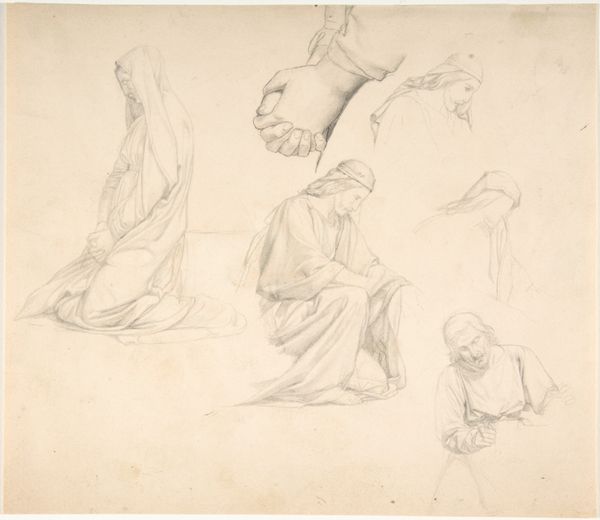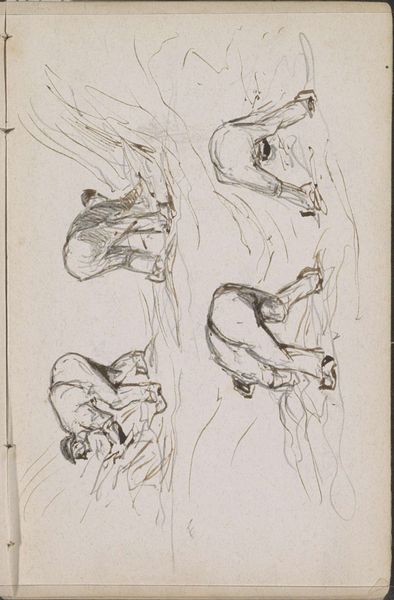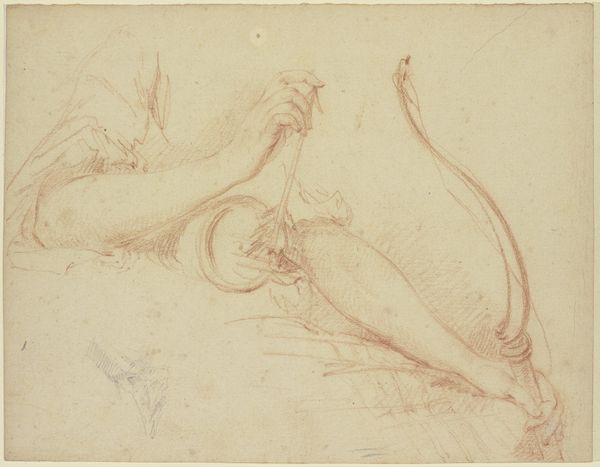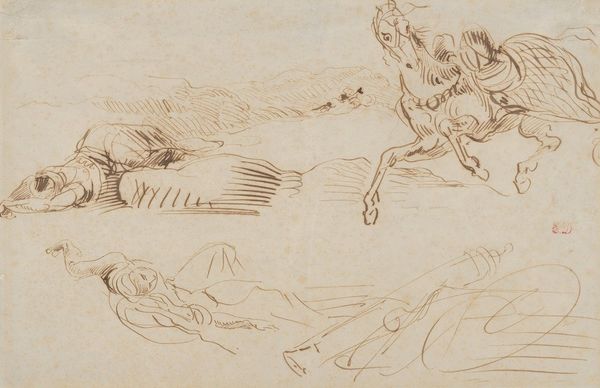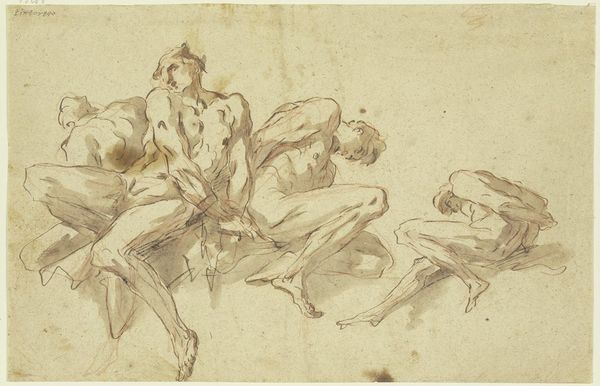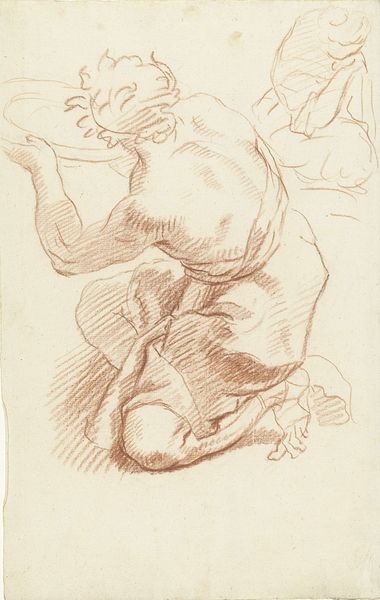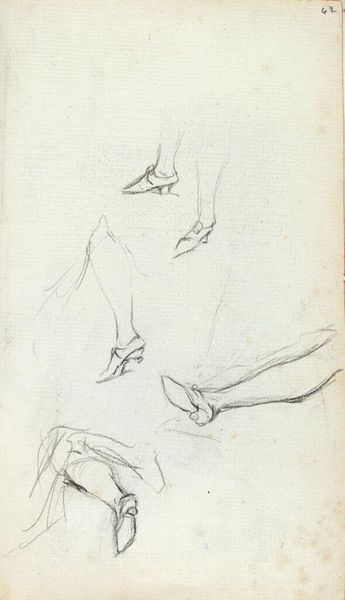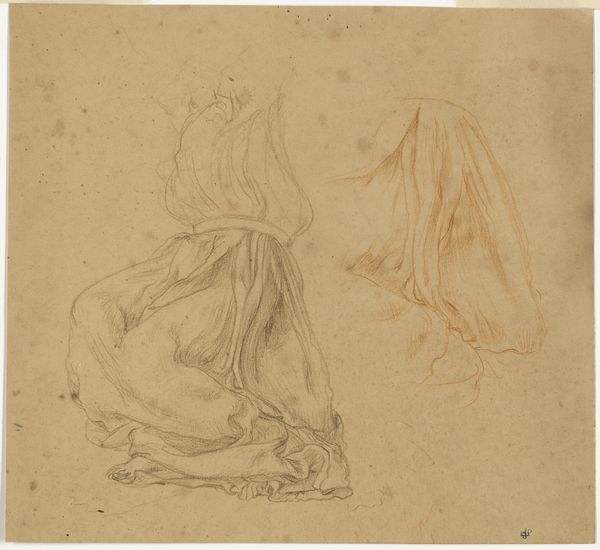
Justice, War, Agriculture, and Industry, Studies for the Palais Bourbon, Paris 1833 - 1836
0:00
0:00
drawing, paper, ink
#
portrait
#
drawing
#
figuration
#
paper
#
ink
#
history-painting
#
academic-art
Copyright: Public Domain: Artvee
Eugène Delacroix created this study for the Palais Bourbon in Paris using pen and brown ink on paper. These are preliminary sketches for allegorical figures representing Justice, War, Agriculture, and Industry. Delacroix received the commission to decorate the Salon du Roi at the Palais Bourbon in 1833, a time when France was undergoing significant social and political changes. The July Revolution of 1830 had just overthrown the Bourbon monarchy, replacing it with the July Monarchy under King Louis-Philippe. This commission was a statement of the new regime. The Palais Bourbon itself was the seat of the French National Assembly; the figures were designed to celebrate France's values and aspirations. Delacroix looked to classical antiquity and Renaissance art for inspiration. The allegorical figures themselves are visual codes with long historical associations representing abstract concepts in human form. Understanding the historical context of this study requires looking into archival materials such as letters, journals, and official documents related to the Palais Bourbon commission, as well as studies of the period's political and cultural climate.
Comments
No comments
Be the first to comment and join the conversation on the ultimate creative platform.
